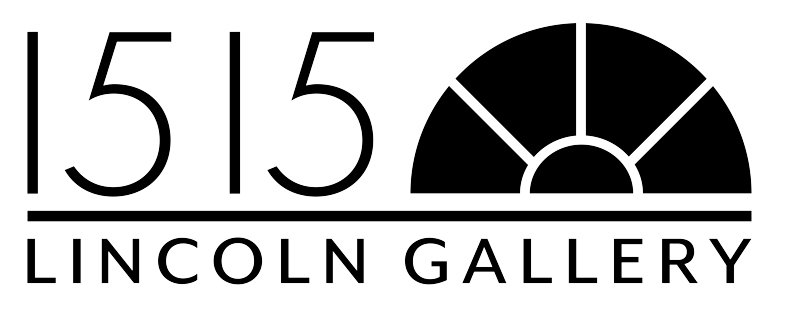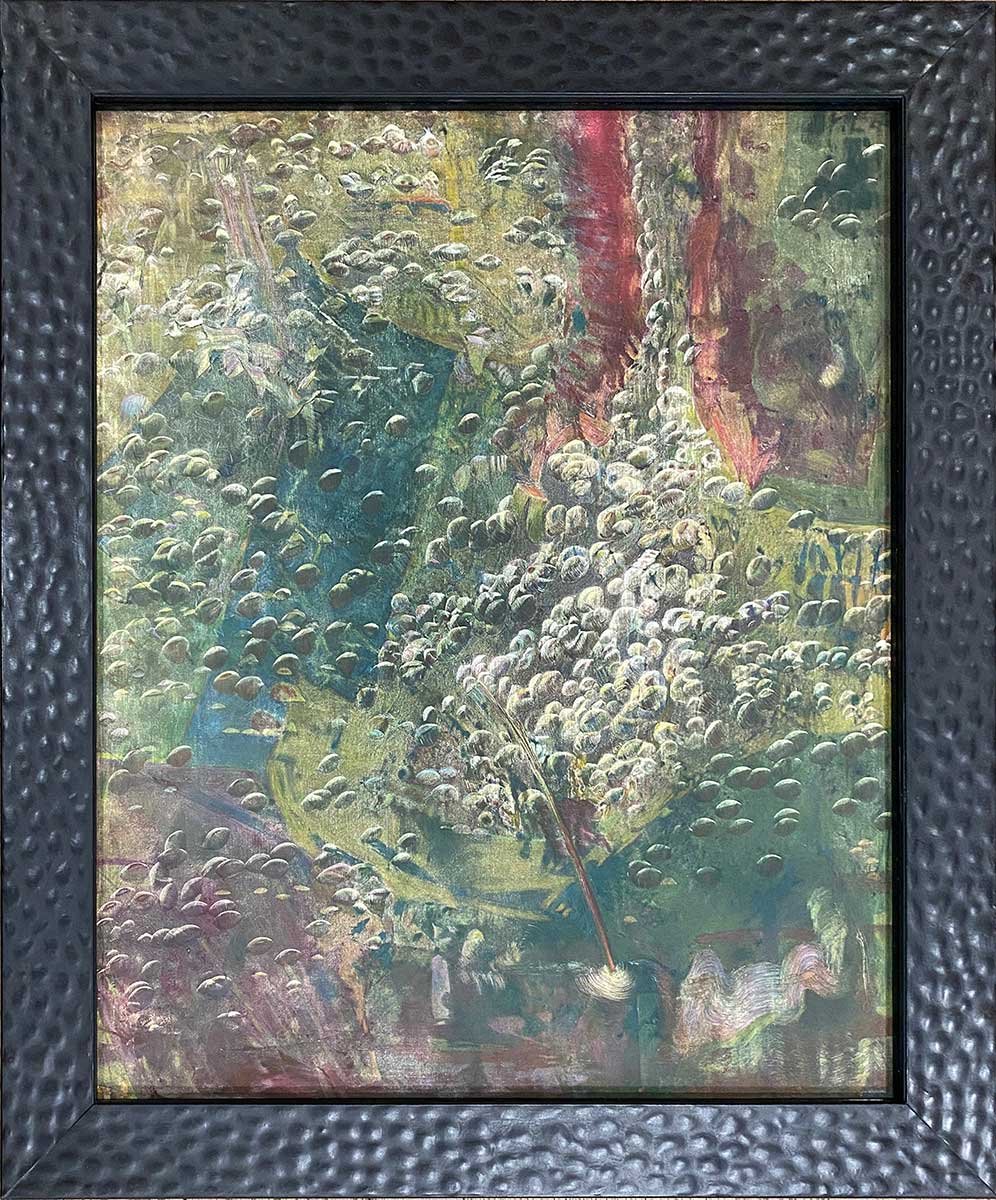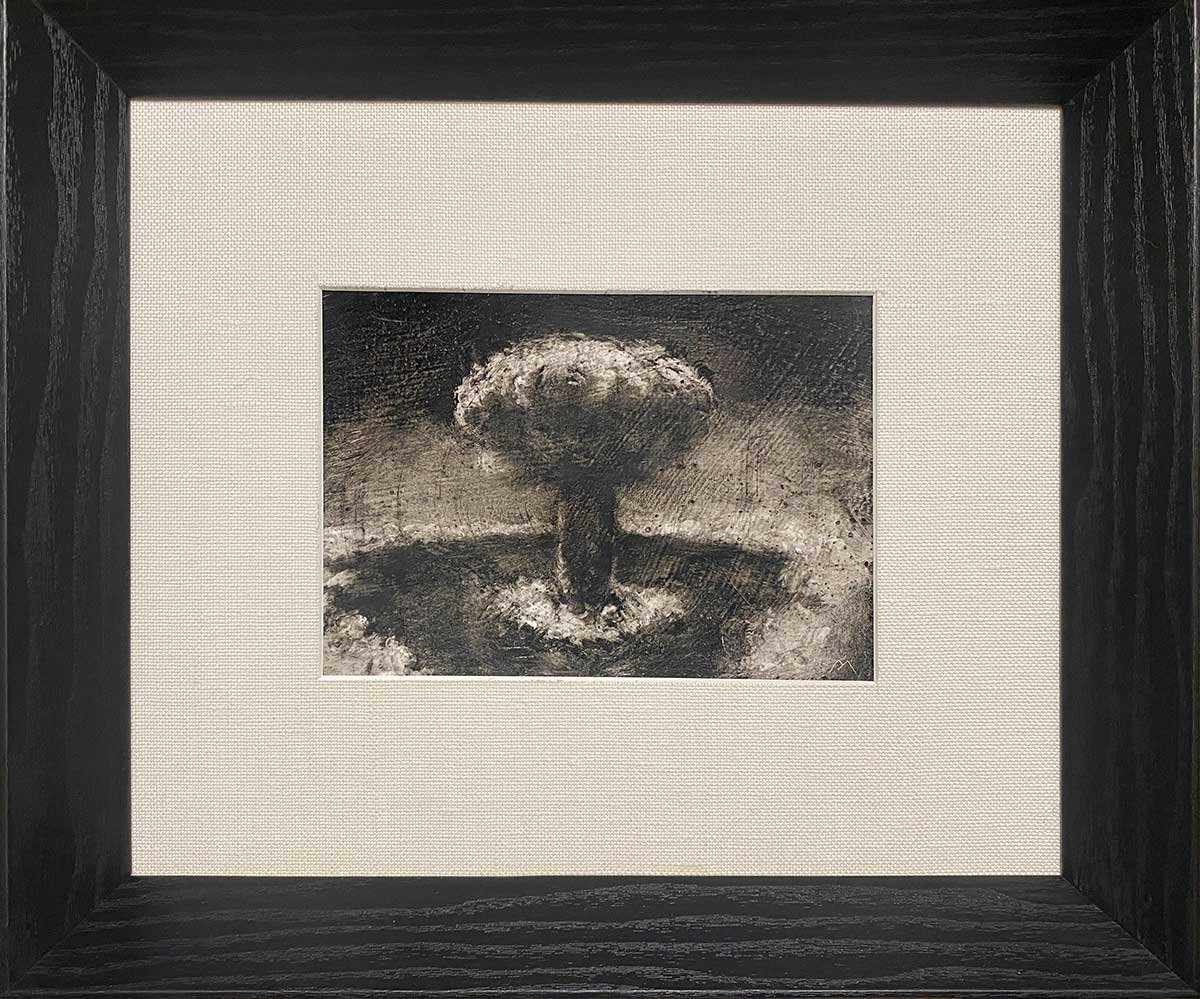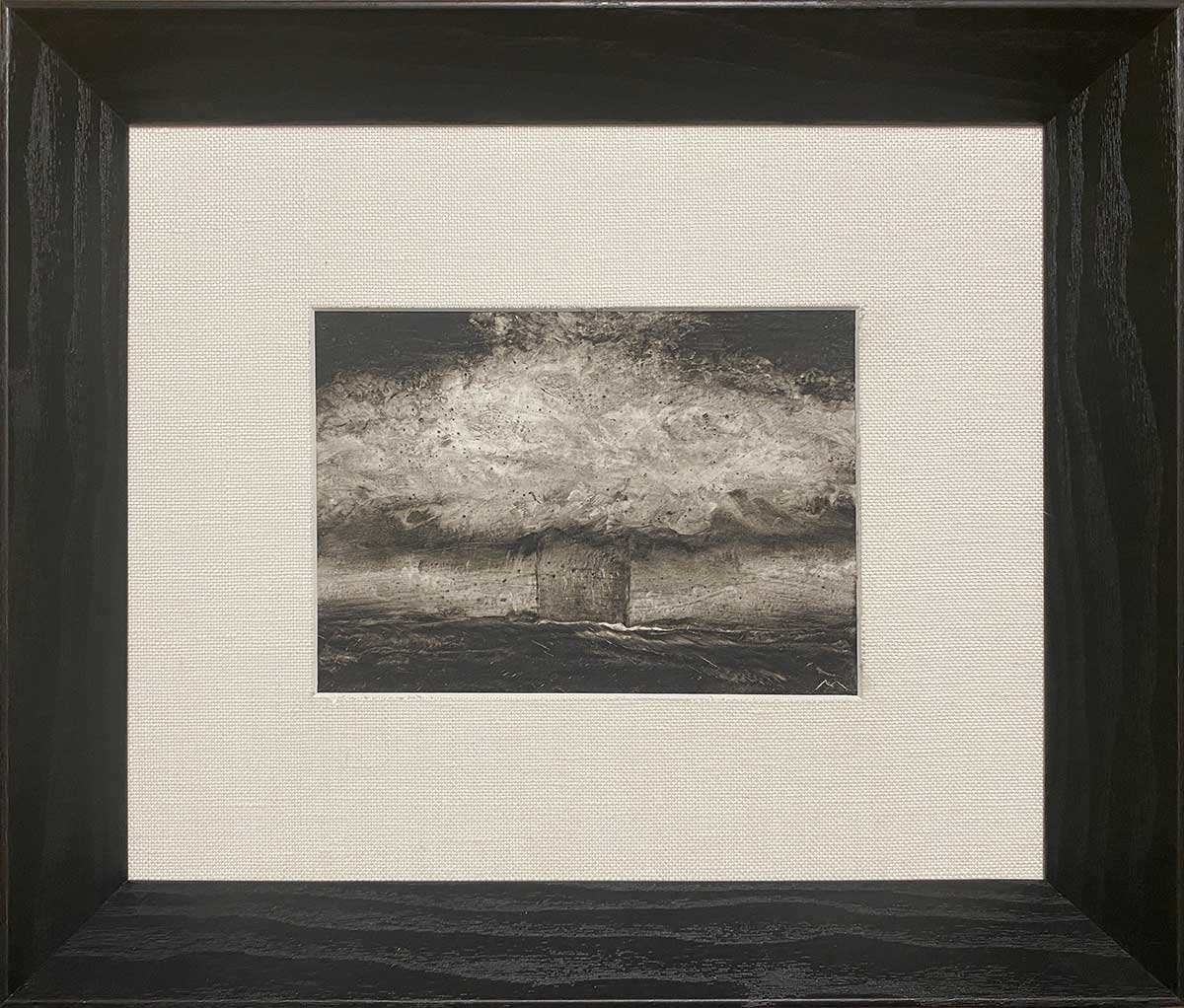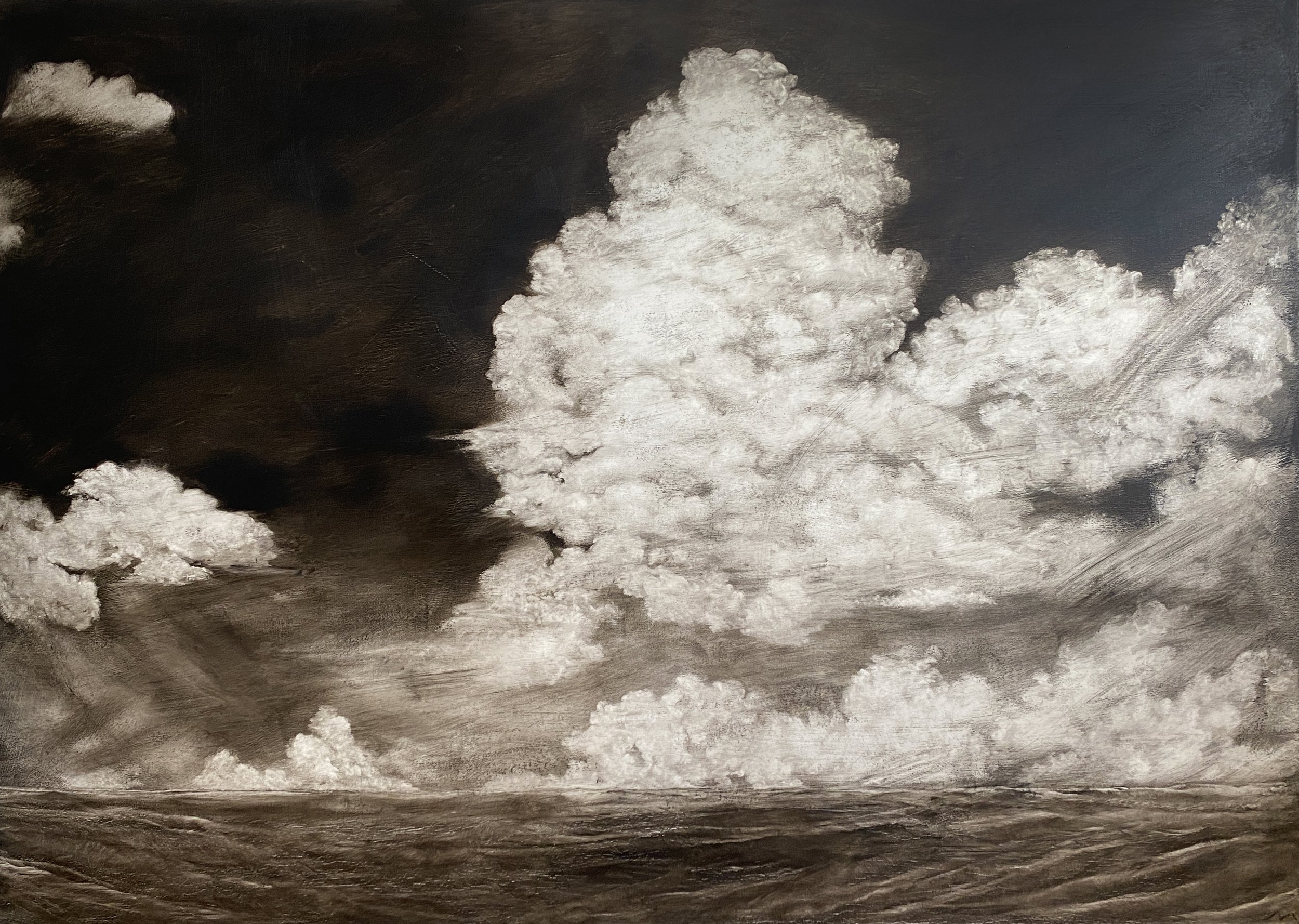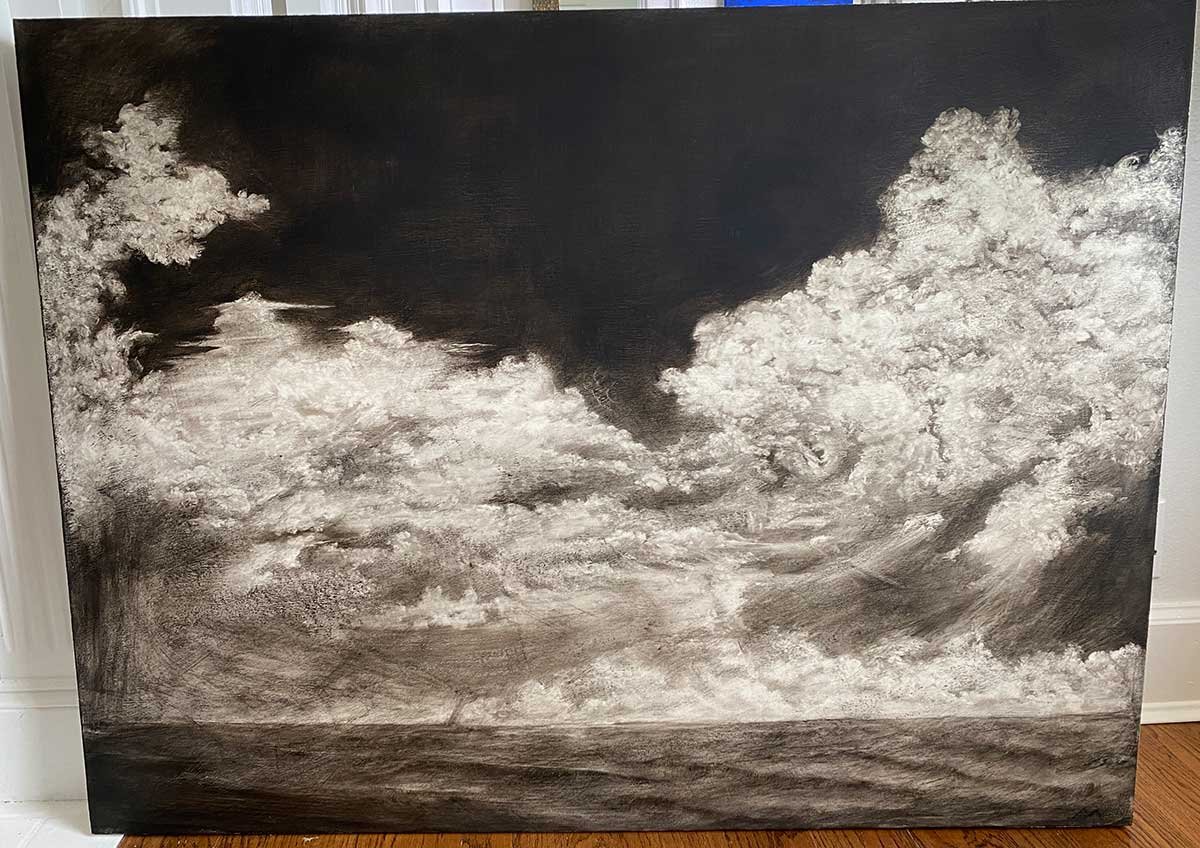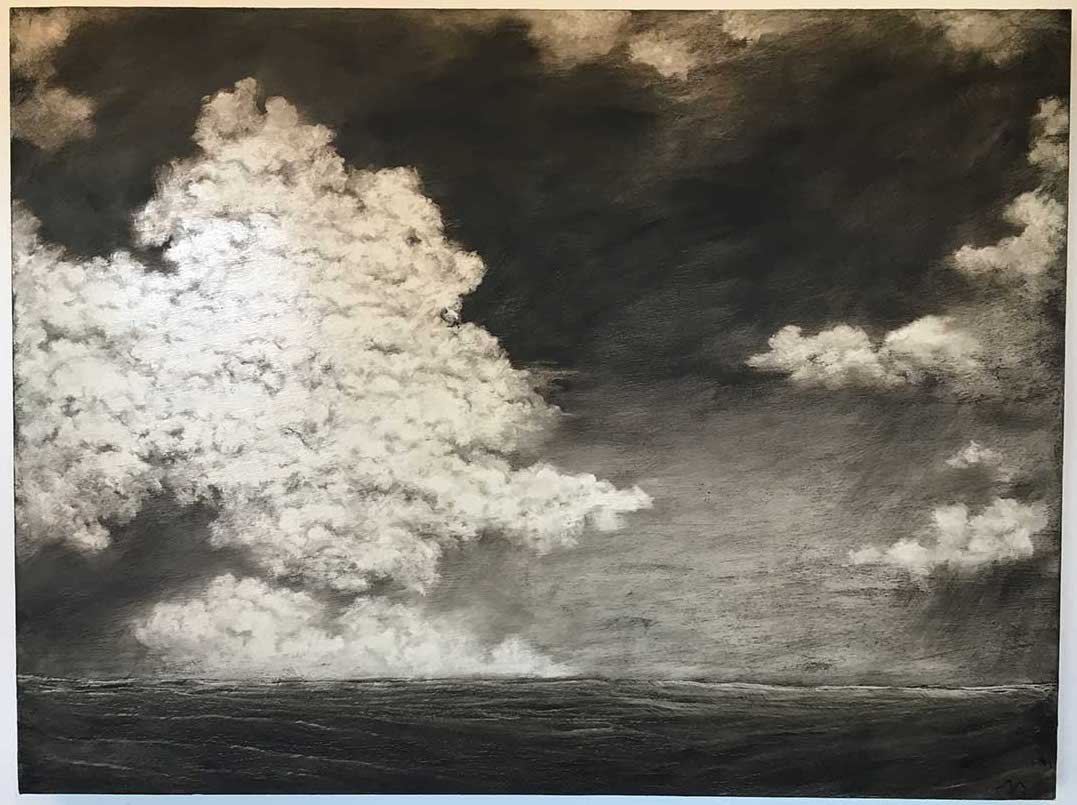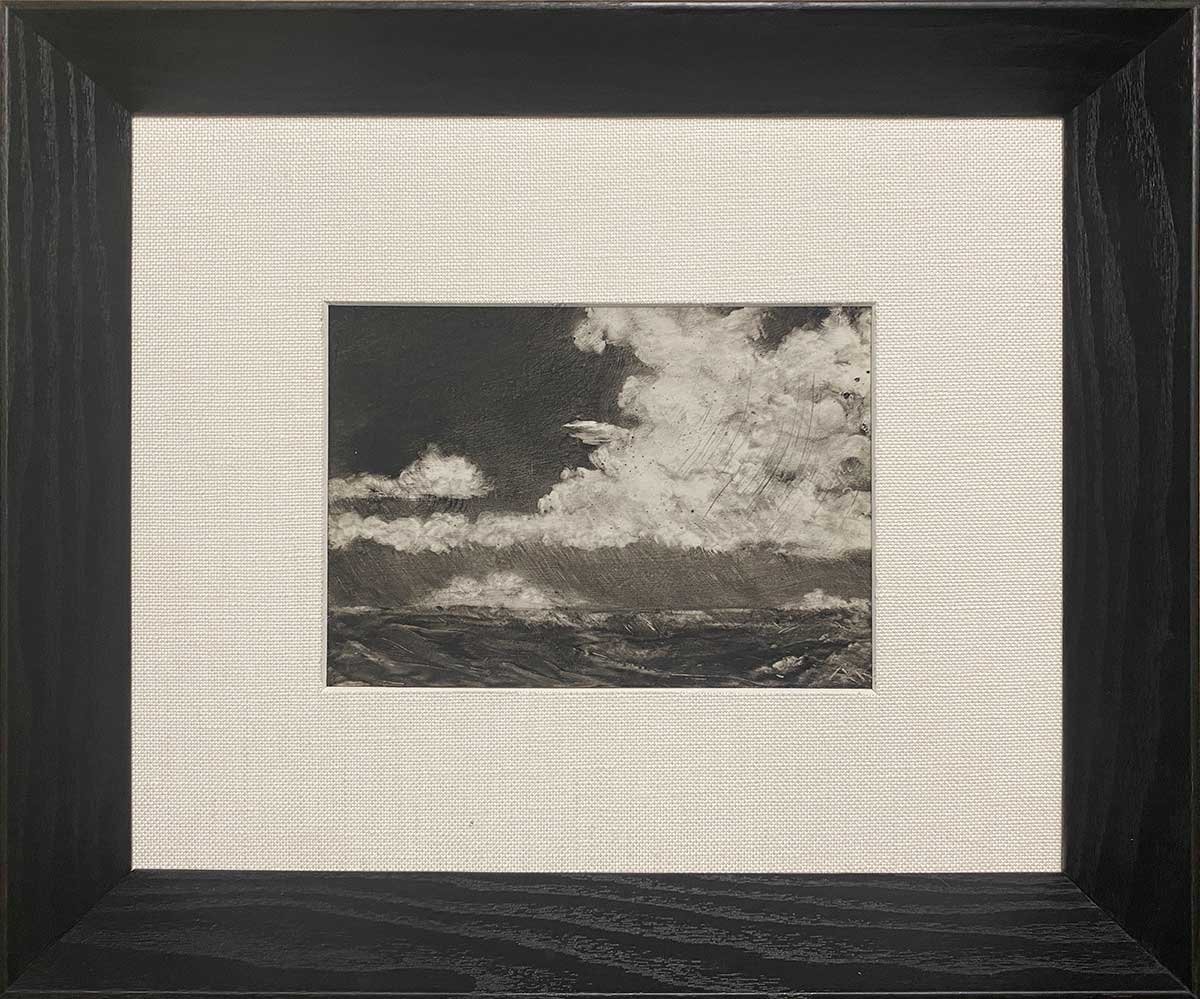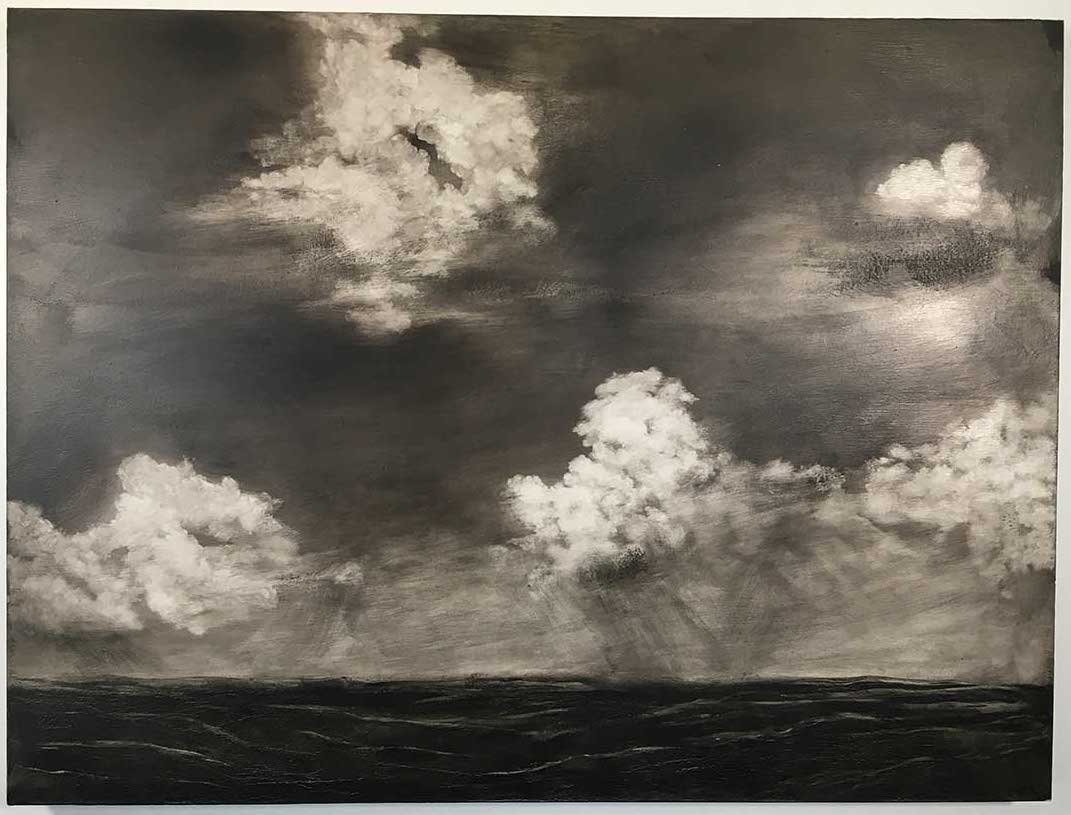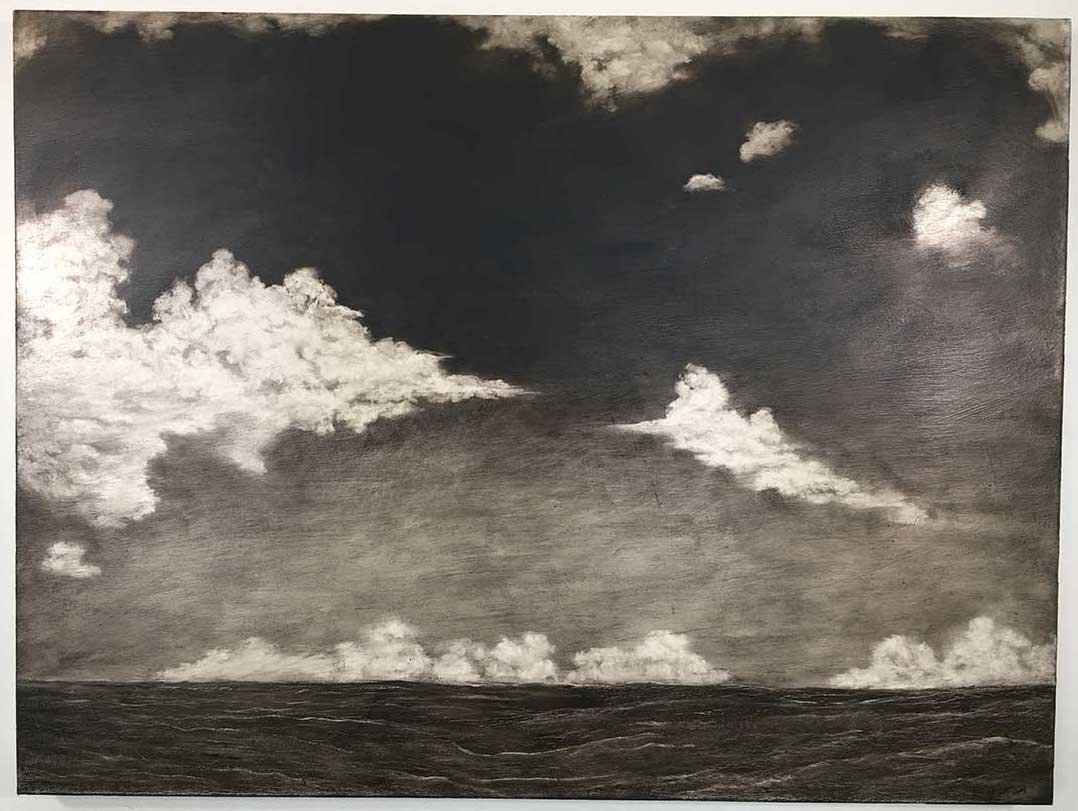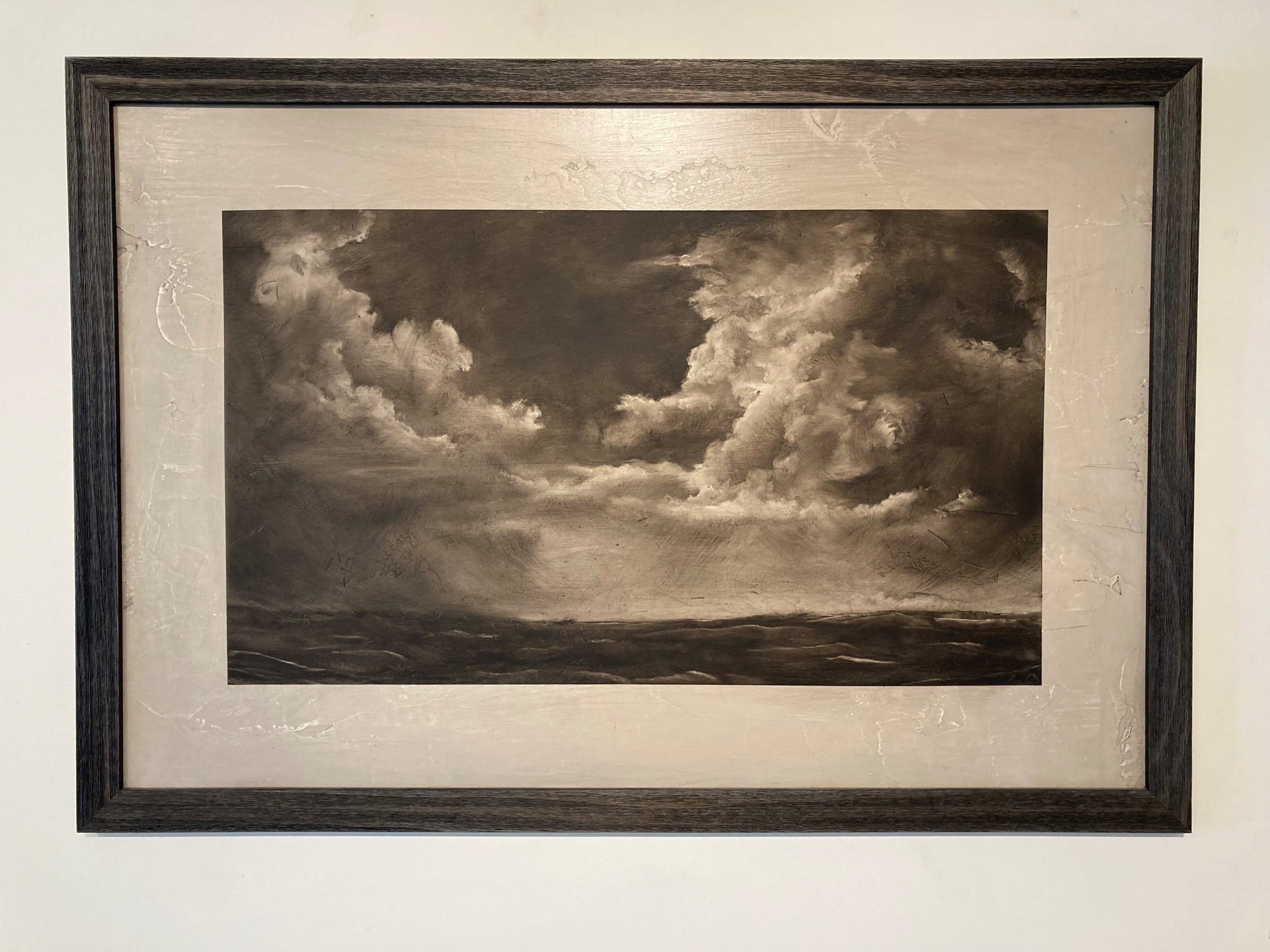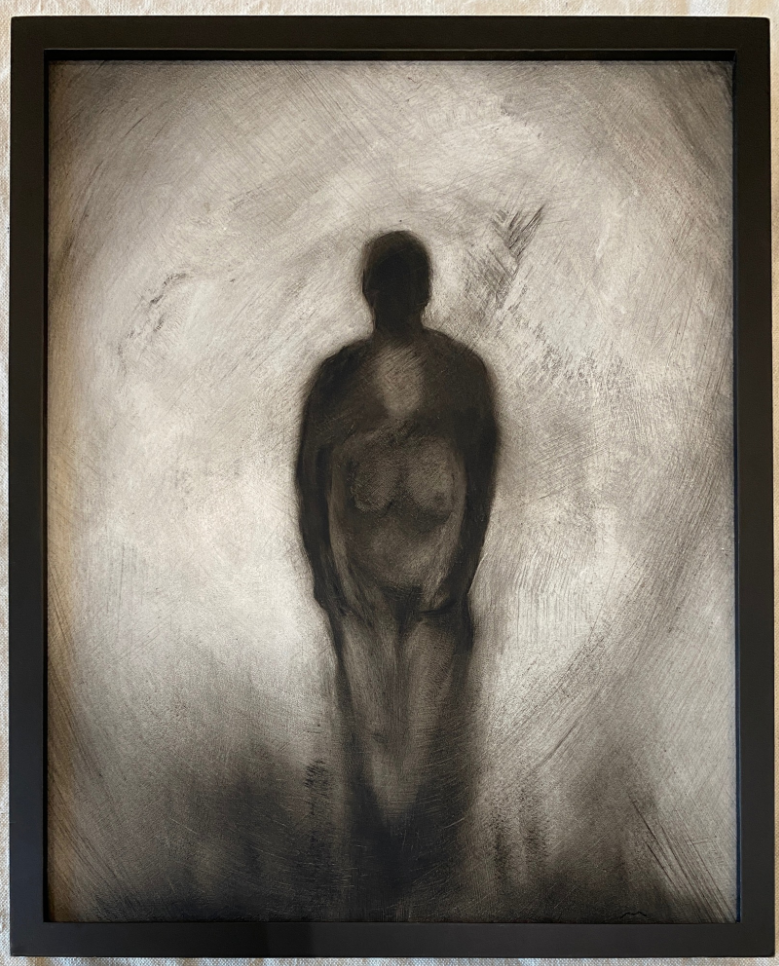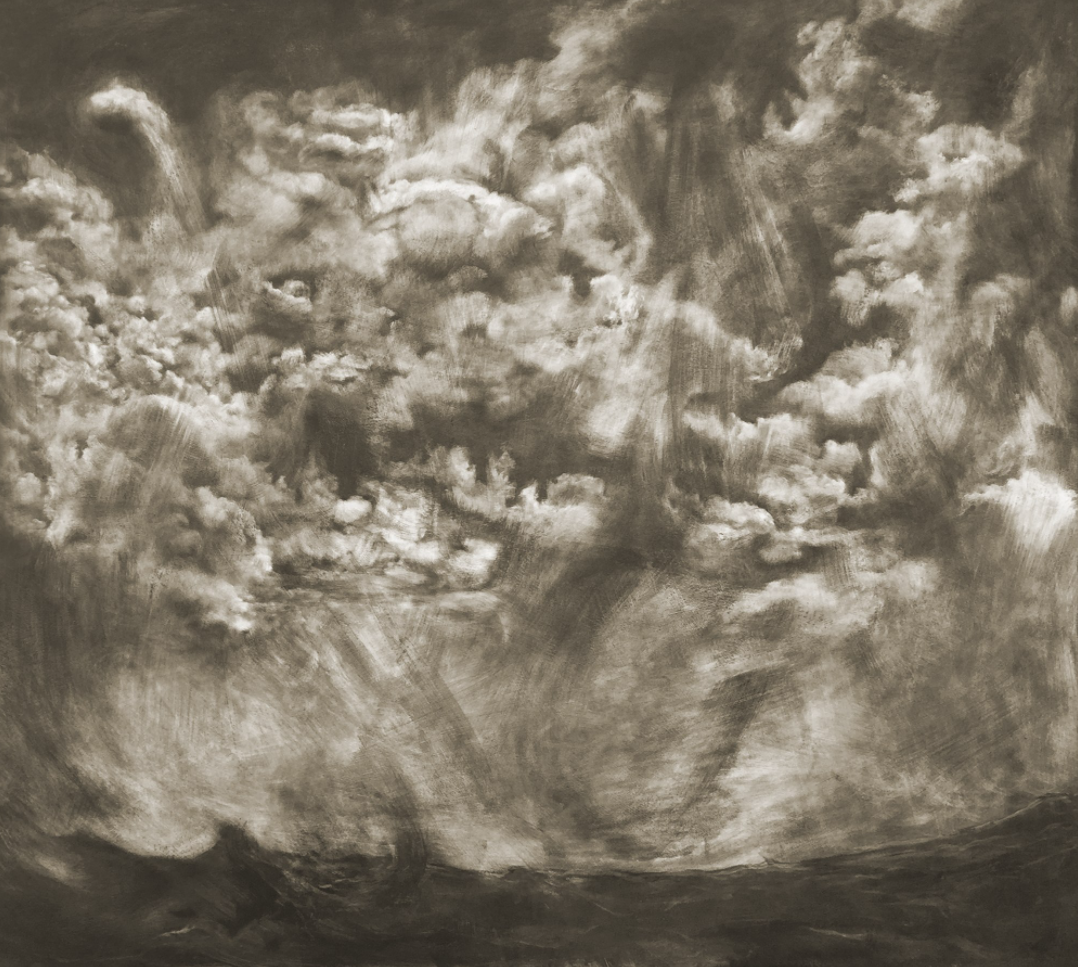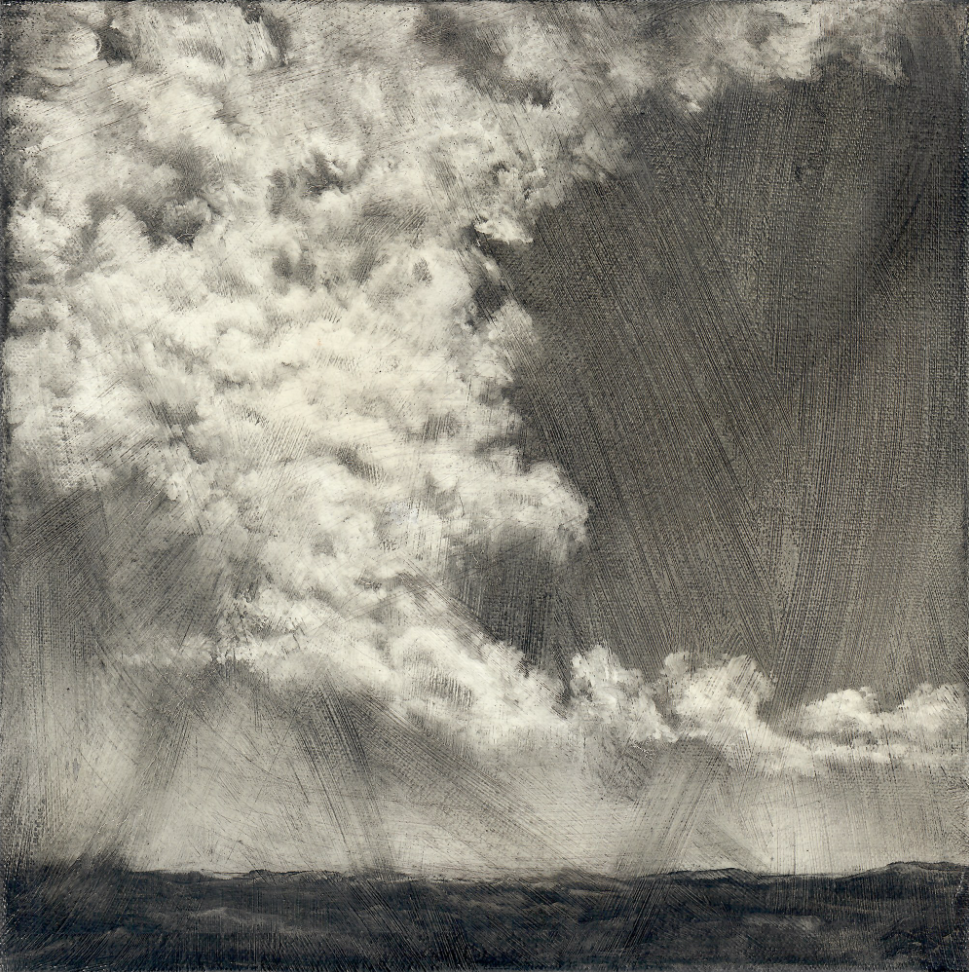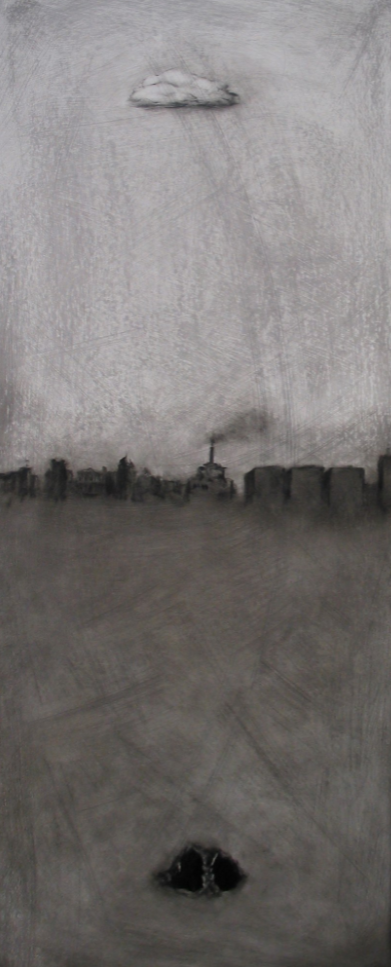Marc Barker
We recently spoke with Marc Barker about his formative experiences in becoming an artist and his philosophies regarding his art practice. This enlightening profile highlights Marc’s inspiring artwork.
What led you to become an artist?
I was a math major at OSU, switched to earn a BS degree in zoology, then continued when I lacked one hour getting my master's degree as it became abundantly clear my life was counter-directional to my passion. So, I picked up a camera in my twenties and began learning tone. Later, I took beginning classes in Theosophy in Denver, and the life-altering outcome was that I finally no longer denied myself. So, I enrolled in a Joseph Albers color class at Central State University (thank you, Bill Wallo!), and on my first day, I began crying in the back row as I realized, “I am finally home.”
Can you describe a typical day or routine in your studio?
I have had a full-time career for over 30 years in interactive and branding media, so my art routine has been confined to working in my studio predominantly on Saturdays, and oftentimes it spills over to Sundays. To put it simply, if I am not at the easel by 7:00 am, it leads to an unproductive weekend. I am now approaching 75 and not retired, but slowly moving full-time into a more regular studio practice and can no longer call myself just a “Saturday painter.”
How would you describe your artistic style?
My early cave-themed work began with black-and-white photographic documentation during my surveying and annual bat counting in Oklahoma. Tonal work continued with cave etchings while I managed Paseo Intaglio Printers, along with Sharon J. Montgomery. During my Paseo years, I editioned collagraphs and etchings for local and national artists, which helped shape my approach to color, materials, and design. For myself, I created cave-themed monotypes and began narrative oil painting. Then, I began academic à la prima nude figure painting and drawing. More recently, my political series I found was best conveyed with abstracted and realistic oil portraits, collage, photography, and mixed media, as I found all were needed to give the best structure to my thoughts. I remain partial to black and white for psychological, metaphorical, and abstractions of nature, because, as my old gallerist said, “When working in black and white, there is no place to hide.”
What materials and techniques do you prefer to work with, and why?
My mom dabbled in oil painting, and I remember fondly the smell of turpentine and linseed oil in our house. I remain admittedly partial to the scent and the sensuality I eventually experienced when a loaded brush first hit a taut canvas—I was hooked! That naivety waned as I learned more about other mediums, and I now have no preference other than whatever best conveys my vision.
How do you approach color and composition in your paintings?
I believe the twin pillars of content and compositional design are perhaps the most important qualities of any artwork because even 10,000 hours of technique can’t overcome their lack. Composition is a continual struggle and is mainly influenced by my textures, which dictate subconscious design and drawn scraps of ideas that clutter everywhere in my house. Gray has infinite gradations between black and white, and choosing the correct one is key to my composition. I see most painters as working from tubes and not as beautiful color composers. I include myself in this category as well, because color is an ongoing learning process.
Is there any advice you would give to aspiring painters based on your experiences?
Eliminate the need for others' approval, especially through social media. I fully admit my aging and my conflict over this because I know how important acceptance is at any age, but especially for the young. However, not everyone will or can be an influencer, very few will be wealthy unless they are born into it, marry it, or are destined for the fame of art history. The earlier these are learned, the more freedom you gain to experience your fit into the art continuum, not art history. Lastly, I don’t follow this advice often enough, but I believe reading, traveling, and experiencing the “new to you” hold the keys to artistic growth. A question that I pose for myself, and might be helpful to aspiring artists when working on an exhibit, series, or just working, is: what did I learn from this experience that I can convey to others that might help them as much as it did for me?
What themes or subjects inspire your artwork the most?
Caves, nature, nude studies, alchemy, magic, politics, schools of esoteric Mystery, current events, people, clouds, and most days just coffee with a splash of sunrise.
Are there any particular artists or movements that have influenced your work?
The themes and the gray haze of the Oklahoma sky, as documented by Ruscha, have continually influenced many Okies, including myself. More recently and philosophically, Enrique Celaya and Vincent Desiderio have influenced my way of thinking about art history, approach, spirituality, etc. Not so much that I include their style in my work, but I include them in my meditations on art.
How do you stay motivated and engaged in your work?
This appears to be a non-question. Anyone who isn’t aligned with their expression, doesn’t know what to work on, or doesn’t know how to remain in their practice might be better served not working in art but in another noble profession. Take a class in something you don’t know or have always wanted to learn, or, like most, visit a place you haven’t seen before, meditate on yourself, or just apply to McDonald's. As Laurie Anderson noted, “When working there, it was the only time I was able to give an audience exactly what they wanted!”
